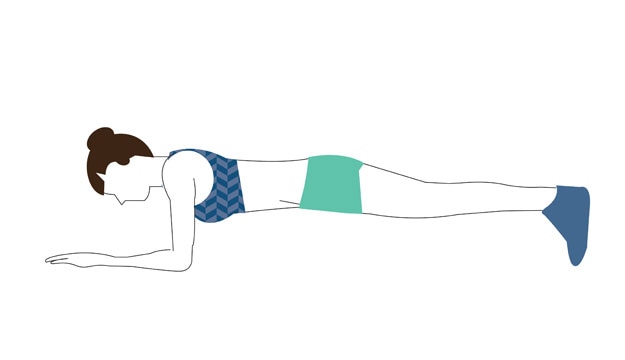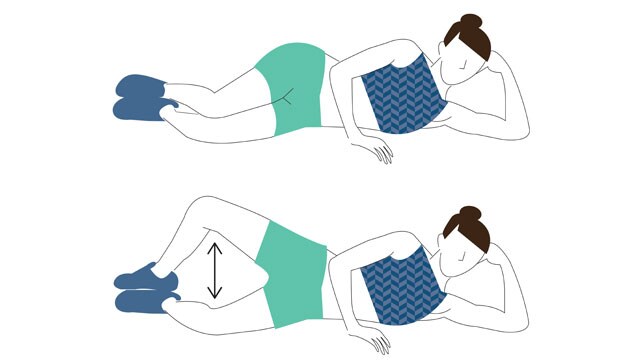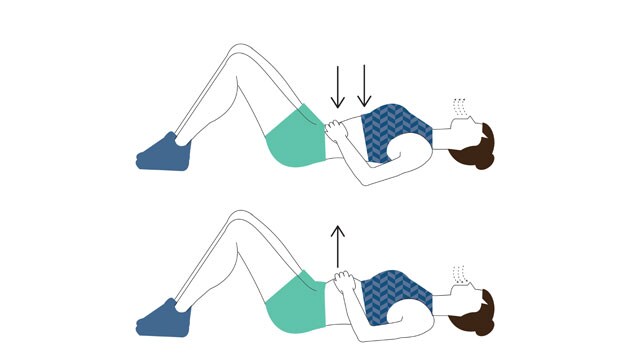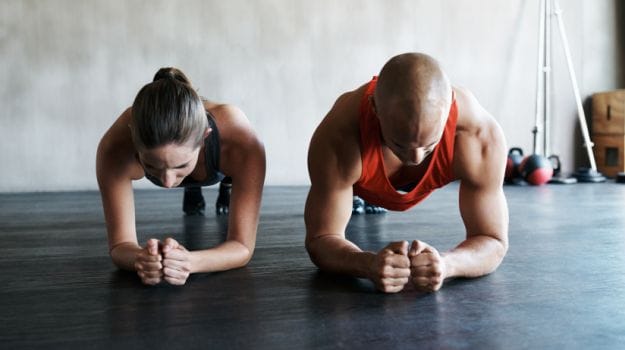Image via iStockAs beach season approaches and we're inundated with swimsuit ads and their six-pack-abs models, it's easy to forget that a strong core is so much more than a well-defined rectus abdominis (that's the six-pack).
In fact, dozens of muscle groups make up the core, including the pelvic floor muscles, transverse abdominis (deep core), internal and external obliques (side of the trunk), multifidus (deep back muscles), erector spinae (vertical back muscles), diaphragm, gluteus maximus (butt) and trapezius (top of the back).

And they're all extremely important, not just for looks but for sports performance, injury prevention, daily tasks and keeping the spine safe and sound, says Anne Viser, a physical therapist at Sports + Spinal Physical Therapy/Orthology in Washington.
"The idea is that these muscle groups work as a team and that we need to activate and coordinate them to move efficiently," Viser says.
So it's far from enough to do a million crunches and call it a day. In fact, that could be counterproductive, because when large (often referred to as "global") muscles - such as the rectus abdominis - "override the deeper, smaller ones, it can lead to injuries," Viser says.
"The big global muscles create big movement patterns, but you need smaller, deeper core muscles to connect vertebrae joint to joint," she adds.
To help clients create a balanced core, she prescribes not only exercises for the back and front of the core, but also breathing exercises such as diaphragmatic breathing.
"Sometimes people are surprised and will say, 'Why are you asking me to breathe?' " she says, explaining that it's important to activate everything in the core from top (diaphragm) to bottom (pelvic floor) to create stability and prevent injury.

Core drills: Plank - hold for 30 seconds. Washington Post illustration by Amanda Soto.- - -
A host of aches and pains can come from a weak core.
"It can be low back pain. IT band and knee issues. It can be shoulder injuries," says Pete McCall, spokesman for the American Council on Exercise and adjunct faculty in exercise science at San Diego State University. The basic principle behind these injuries, McCall says, is that when one link (in this case, the core) is weak, other muscle groups try but fail to take over, leading to breaks or tears.
And yes, that extends throughout the body. "If you are playing catch with someone or fetch with your dog, it requires core strength," says Gabe Free, a strength and conditioning specialist.
The energy in a throw is transferred from the ground up, Free says. That means the legs, hips, core, shoulder and arm are included in the whipping motion of a throw. If the core is weak, it can put undue strain on the back or shoulder, which can lead to - you guessed it - back and shoulder injuries.
Viser adds that rotator cuff injuries often occur when the mid-back is weak and the chest and upper back take over.
"That can pull the humerus out of its socket," Viser says.

Core drills: Clamshell. Washington Post illustration by Amanda Soto.
Similar issues can occur from other everyday movements, such as picking up grocery bags from the floor or lifting things off high shelves.
"If you have strong legs and strong arms but your core is weak, it's as if you have two cinder blocks with a balloon between them," Free explains.
In other words, not a very stable structure.
McCall points out that in addition to strength, mobility is also important for core stability. Many people - office workers and athletes alike - have tight hip flexors, which can lead to lower back pain.
"If your hips are tight, then the back starts picking up the slack," McCall says - and often not very well. For many people, it's a matter of increasing the flexibility in the hips and increasing strength in the back.
A strong core is important in just about every sport. "Even distance running, where people don't always think that core is important, it's actually key for posture," Free says. "If you don't have a strong core at the half-marathon mark, you will feel it in your lower back."

Core drills: Diaphragmatic breathing exercise. To help clients create a balanced core, physical therapist Anne Viser prescribes not only exercises for the back and front of the core, but also breathing exercises such as diaphragmatic breathing. Washington Post illustration by Amanda Soto.
In contact sports, which Free knows something about, having played rugby at Penn State, it's even more important.
"If you stiff-arm someone, you have to be able to sustain that force through the whole chain, from legs through the torso through the arm," he says, adding that if your core is weak, your back will bend backward. Ouch.
- - -
15-minute core workout
Anyone who has ever had a back injury knows it's a pretty dreadful state of affairs.
"They can tell you that no movement is comfortable except if you're lying down," says Gabe Free, a Washington-based strength and conditioning specialist. This is why, even if you have only 15 minutes a day to spare, Free suggests devoting those minutes to core drills.
Do three sets of 15 to 20 reps each: (See accompanying illustrations.)
 Core drills: Bird dog. Washington Post illustration by Amanda Soto.
Core drills: Bird dog. Washington Post illustration by Amanda Soto.
- Clamshell
- Bird dog
- Dead bug
- Plank (Hold for 30 seconds.)
- Gluteus bridge
- - -
Diaphragmatic breathing exercise
Lie on your back with your knees bent and feet on the floor. Place your hands across the lower half of your rib cage. Breathe in and allow your ribs to expand into your hands. Breath out and allow your rib cage to sink inward and downward. Watch that you do not lift your breastbone as you breathe in. Instead, imagine the back of your rib cage spreading wide into the mat underneath you. Repeat for six to eight breath cycles.
(c) 2016 The Washington Post









